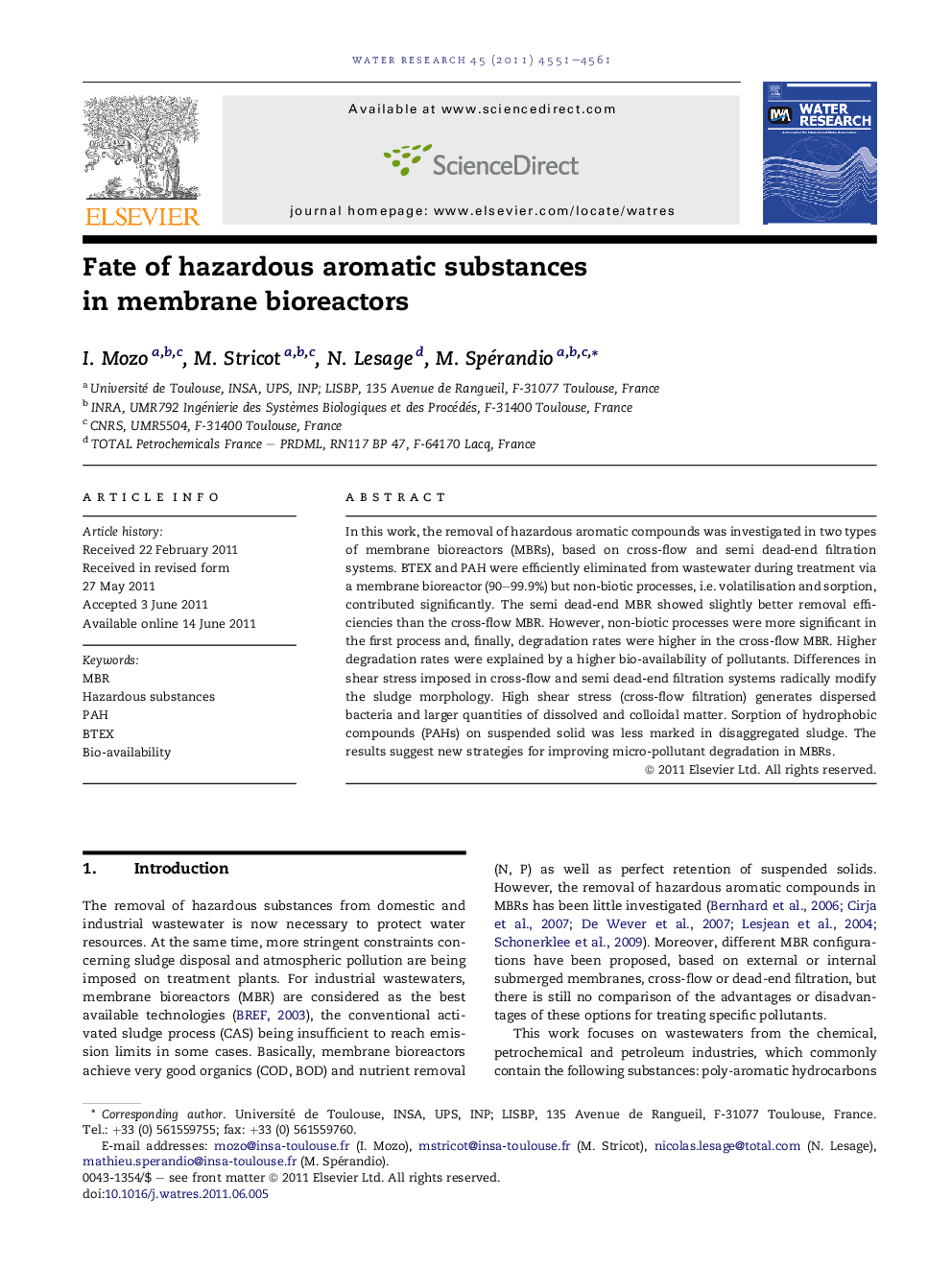| کد مقاله | کد نشریه | سال انتشار | مقاله انگلیسی | نسخه تمام متن |
|---|---|---|---|---|
| 4483313 | 1316884 | 2011 | 11 صفحه PDF | دانلود رایگان |

In this work, the removal of hazardous aromatic compounds was investigated in two types of membrane bioreactors (MBRs), based on cross-flow and semi dead-end filtration systems. BTEX and PAH were efficiently eliminated from wastewater during treatment via a membrane bioreactor (90–99.9%) but non-biotic processes, i.e. volatilisation and sorption, contributed significantly. The semi dead-end MBR showed slightly better removal efficiencies than the cross-flow MBR. However, non-biotic processes were more significant in the first process and, finally, degradation rates were higher in the cross-flow MBR. Higher degradation rates were explained by a higher bio-availability of pollutants. Differences in shear stress imposed in cross-flow and semi dead-end filtration systems radically modify the sludge morphology. High shear stress (cross-flow filtration) generates dispersed bacteria and larger quantities of dissolved and colloidal matter. Sorption of hydrophobic compounds (PAHs) on suspended solid was less marked in disaggregated sludge. The results suggest new strategies for improving micro-pollutant degradation in MBRs.
► BTEX and PAH are efficiently removed from wastewater by membrane bioreactor.
► Volatilisation and sorption contribute significantly to BTEX and PAH removal respectively.
► Suspended solids disintegration generated by shear stress could reduce observed sludge production.
► Increase in colloidal matter lead to an increase in degradation rates of pollutants.
► Pollutant accessibility for bacteria is increased thanks to biomass dispersion.
Journal: Water Research - Volume 45, Issue 15, 1 October 2011, Pages 4551–4561